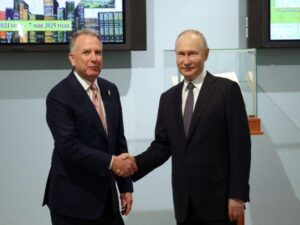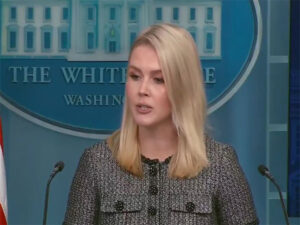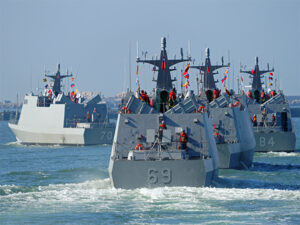Singapore Airlines to get 25.1 pc stake in enlarged Air India group
Singapore, February 28 (ANI): Singapore Airlines’ deal with Tata Sons (Tata) will inject a further SGD 360 million (USD 267 million) into Air India. It will give SIA a 25.1 per cent stake in the enlarged Air India group following its takeover by Tata and merger with Vistara Airlines. The November 2022 deal between Singapore Airlines and Tata Sons to further inject USD 267 million into Air India is one of the key strategic initiatives for future growth mentioned in the quarterly financial report. This agreement is still subject to regulatory approval.
SIA in the statement said, “The merged entity will be four to five times larger in scale compared to Vistara, with a strong presence in all key airline segments in India. The proposed merger will bolster SIA’s presence in India, strengthen its multi-hub strategy, and allow it to continue participating directly in this large and fast-growing aviation market.”
The airline further said, “Deeper collaboration with like-minded airlines is an integral part of the SIA Group’s partnerships strategy. This enables SIA and its partners to drive more traffic to their hubs, offer more options to customers, and increase the Group’s global footprint.”
Last week, Singapore Airlines (SIA) announced that net profit for Q3 which ended in December, came in at Singapore dollar (SGD) 628 million (USD 465 million) and financial year-to-date profits touched SGD 1,555 million (USD 1,152 million). They are the highest the airline has ever earned in a quarter as well as for the first nine months of a financial year.
The airlines said in a statement that this is due to “the robust demand for air travel continuing into the third quarter of FY2022/23, building on the momentum that began after Singapore relaxed its border restrictions in April 2022.” SIA financial year starts in April.
This comes on the back of Singapore’s announcement that from February 13, it will relax all remaining Covid restrictions for travellers as well as locals. Travellers who are not fully vaccinated against Covid will no longer need to show proof of a negative pre-departure test before entering Singapore and do not need to buy travel insurance to cover Covid treatment if they fall ill on the island. Those who are vaccinated no longer need to show proof on arrival. The use of a face mask on public transport which was the last remaining local Covid-era protocol is no longer mandatory as of the same date.
Singapore was one of the first Asian countries to reopen after the Covid pandemic and that has aided its tourism industry along with its national carrier. Besides government grants to affected industries during Covid, the airline was the beneficiary of its shareholders and financial institutions’ confidence in its business as it managed to raise SGD 22.4 billion (USD 16.6 billion) during Covid including SGD 15 billion from shareholders (largest of which is state investment firm Temasek Holdings) through sales of shares and convertible bonds. As of December 2022, it still holds a cash balance of SGD 15.4 billion.
This allowed it to keep most of its staff and fleet and facilitated restoration of routes quickly once travel resumed. This was unlike other regional airlines which had to let staff go and sell aircraft to keep afloat.SIA reported that its group passenger capacity reached 80 per cent of pre-Covid levels in December 2022, higher than the average of 51 per cent for the Asia-Pacific region.
Its two main airline brands carried 7.4 million passengers in the third quarter, up 17 per cent from the second quarter. When added to the first two quarters, the SIA Group served 18.8 million passengers for the first nine months of the financial year. This is a nine-fold increase from a year earlier (2021) when most of the world’s borders were still closed.
Passenger load factors for the Group improved by 0.8 percentage points to 87.4 per cent, the highest for any quarter, on the back of record load factors for both premium airline, SIA (87.3 per cent) and low-cost carrier, Scoot (87.8 per cent).
SIA reported that its cargo performance moderated compared to the previous quarter due to softening demand, as well as an increase in belly hold capacity as more passenger aircraft returned to service globally. While yields were weaker quarter-on-quarter, they remained elevated — almost double — compared to pre-Covid levels.
Overall, SIA’s revenue for the three months to December rose SGD 358 million (USD 265 million), an 8 per cent quarter-on-quarter increase to SGD 4,846 million (USD 3,589 million), a record.
Passenger-flown revenue increased by 14 per cent or SGD 463 million to SGD 3,767 million as traffic grew 12.2 per cent for the quarter, outpacing the 11.1 per cent expansion in capacity. Revenue per available seat-kilometre (RASK) was 10.6 Singapore cents, the highest quarterly RASK in the Group’s history.
Cargo flown revenue fell 14.1 per cent or SGD 141 million (USD 104 million) to SGD 862 million (USD638 million), with the lower yields which were down 14.6 per cent partially mitigated by a slight uptick in loads, up 0.6 per cent.
Expenditure increased 7.4 per cent or SGD281 million (USD208 million) quarter-on-quarter to SGD 4,091 million (USD 3,030 million). This comprised an SGD 371 million (15.5 per cent) rise in non-fuel expenditure that was partly offset by an SGD 90 million decrease (-6.3 per cent) in net fuel cost.
The increase in non-fuel expenditure was higher than the increase in capacity, mainly driven by higher foreign exchange losses of SGD 194 million (USD 144 million) recorded at the end of the current quarter with the US dollar weakening 6.1 per cent against the Singapore dollar. Net fuel cost fell to SGD 1,333 million (USD 987 million) mainly due to a 13 per cent drop in fuel prices. This was partly offset by higher volumes uplifted (+USD 103 million) and lower fuel hedging gain (+USD 19 million).






